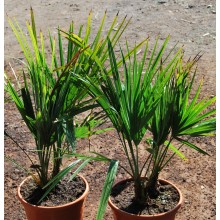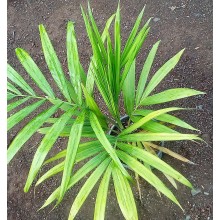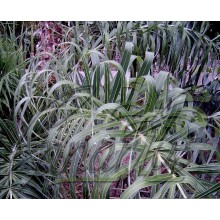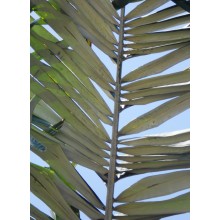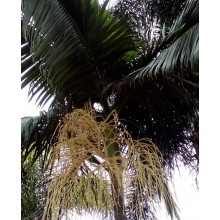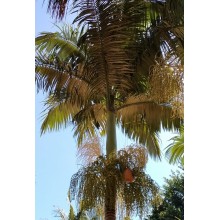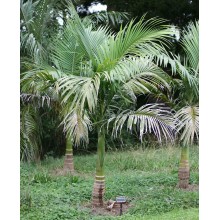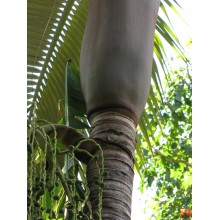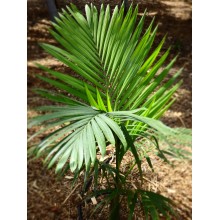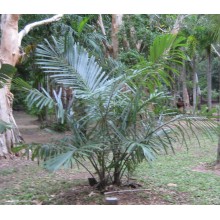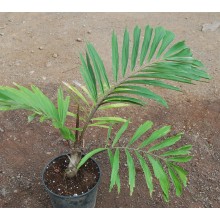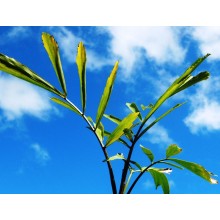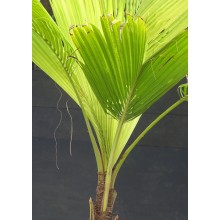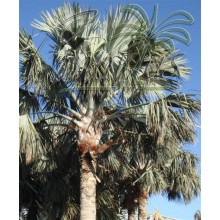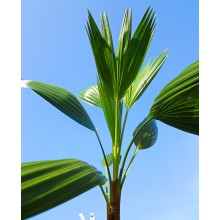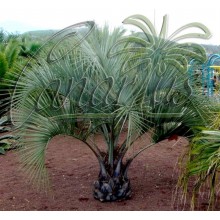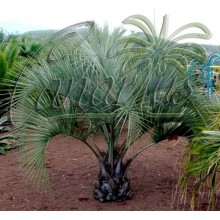Palmen Es gibt 101 Artikel.

Die Palmenfamilie, Arecaceae oder Palmae, besteht aus etwa 2.400 Arten, die in warmen Klimazonen der Erde, beheimatet sind und von empfindlichen tropischen Arten bis hin zu winterresistenten Palmen reichen. Manche Palmen können draußen in Zentraleuropa gepflanzt werden und widerstehen hartem Frost, sogar unter -10°C (14 F). Die die aus meditteranen Ländern kommen haben eine größere Anzahl an Arten, die draußen wachsen können. Macnhe Züchtern an der Küste Südeuropas züchten nun Draußenkollektionen von Palmen mit mehr als 100 Arten.
Canarius wid nur robuste Palmen, verschicken, in kleinen Töpfen um die Versandkosten und Probleme beim Hantieren zu reduzieren. Also topfen Sie sie zu größeren Töpfen um, kurz nachdem Sie das Paket erhalten. Seien Sie darauf vorbereitet ihnen das beste zu geben. Manceh Palmen können Schnee ertragen, manche können drinnen oder in Töpfen leben und andere wiederum sind sehr tropisch. Wählen Sie einfach eine, die zu Ihren Bedingungen passt.
Welche Palmen können in Ihrer Region leben? Lesen Sie unsereListe der kälteresistenten Palmen für Europa. Besuchen Canarius blog Sie den Canarius Blog und erfahren Sie mehr über unsere Palmen. Sie werden Bilder aus den Baumschulen sehen: verschiedene Typen von Neuseelandpalmen, Flaschenpalmen mit herausragender Wurzelqualität.
-
Acoelorraphe wrightii
Acoelorraphe wrightii
This clumping palm is typically found in marshlands, with thin trunks up to 7 m tall. It is a symbol of the Everglades in Florida. Acoelorraphe tolerates brackish water and often grows with mangroves.
72,00 € -
Adonidia merrillii LARGE
Adonidia merrillii LARGE
This mid sized palm is popular in tropical gardens throughout the world.
49,30 € -
Allagoptera arenaria
Allagoptera arenaria
h= 20-40 cm - Cont. 16 cm. Low trunkless feather palm from the coastal dunes of Brasil, with elegant ruffled leaves coming out of the ground. Flowers are borne on unbranched spikes.Allagoptera needs drained sandy soil, enjoys coastal locations and can take light freezes. It can grow outdoors in coastal Mediterranean gardens.
27,60 € -
Allagoptera caudescens
Allagoptera caudescens
Elegant palm from Brazil. Leaves, are pinnate, with "clustered segments", silvery white underneath. It is slow but the beauty of the leaves starts soon! Flowers and fruits are produced on a large hanging spikes. It has some tolerance to cold, it takes short light frosts and can be tried outdoors in the coastal Mediterranean. It was formerly named...
31,40 € -
Archontophoenix maxima
Archontophoenix maxima
Very elegant palm from Australia, with slender ringet trunk, topped by a showy bright green crownshaft.
32,50 € -
Archontophoenix myolaensis
Archontophoenix myolaensis
This species of Archontophoenix is native to a small area in the mountainous region west of Cairns in N.W. Queensland, found in a few locations in gallery forests following rivers. It is similar to the more common Archontophoenix cunninghamiana, with a slightly smaller size, a bluer crownshaft and some other minor differences.
42,00 € -
Archontophoenix purpurea
Archontophoenix purpurea
The showy, colourful crownshaft is the masterpiece of this elegant solitary palm from australia. A rainbow of purple, green and blue.
52,00 € -
Archontophoenix tuckeri
Archontophoenix tuckeri
Uncommon Archontophoenix species from Northern Australia. Leaves are silver underneath, somewhat pendulous or drooping. It is suited to coastal Mediterranean condition and it takes cool weather and short, light frosts.
28,60 € -
Areca catechu
Areca catechu
Areca catechu is a species of palm native to the Philippines cultivated for areca nuts. Medium-sized palm tree, growing straight to 20 m tall, with a trunk 10–15 cm in diameter. The leaves are 1.5–2 m long, pinnate, with numerous, crowded leaflets.
29,40 € -
Arenga australasica
Arenga australasica
Clumping feather palm from NE Australia, found mainly in coastal areas. Despite its tropical origin, it grows in colder climates.
72,00 € -
Arenga engleri
Arenga engleri
Clumping frost-hardy palm with attractive pinnate leaves that are dark green above, and silver below. This tropical-looking palm is native to the open forests of Taiwan and the Ryukyu Islands.
51,00 € -
Arenga pinnata
Arenga pinnata
Arenga pinnata is an economically significant feather palm native to tropical Asia, ranging from eastern India to Malaysia, Indonesia, and the Philippines in the east.
48,30 € -
Arenga ryukyuensis
Arenga ryukyuensis
This new palm was described in from southern Ryukyu Islands of Japan. It is similar to the beautiful Arenga engleri from Taiwan but it is probably more cold-tolerant. It is also smaller, with shorter and thicker stems, to 2m and 20cm diameter, and leaves to just 2m long. Slow, but frost-resistant, to about -7 C!
36,60 € -
Beccariophoenix fenestralis
Beccariophoenix fenestralis
Beccariophoenix fenestralis is a spectacular, massive and rare Coconut relative from Magagascar.It is an imposing palm tree that is is cultivable in tropical and humid subtropical climate regions, in full sun and on rich soils, preferably sandy, acidic or neutral, where it grows quickly and vigorously.We offer a 60 cm high plant.
92,00 € -
Beccariophoenix fenestralis Large
Beccariophoenix fenestralis Large
Beccariophoenix fenestralis is a spectacular, massive and rare Coconut relative from Magagascar.It is an imposing palm tree that is is cultivable in tropical and humid subtropical climate regions, in full sun and on rich soils, preferably sandy, acidic or neutral, where it grows quickly and vigorously.We offer a 100 cm high plant.
132,00 € -
Bismarckia nobilis
Bismarckia nobilis
Majestic, "noble", silvery-blue palm native to the savannas of Madagascar. Fast growing large robust palm with fan-shaped leaves.
43,50 € -
Brahea edulis
Brahea edulis
This palm is native to the mountains of the small island of Guadalupe, off of the Western coast of Mexico. It is really endangered in habitat but it thrives in cultivation under a wide range of conditions. A perfect species for the Mediterranean.
26,00 € -
Butia odorata - Jelly Palm
Butia odorata - Jelly Palm
Feather palm with sweet, tasty, scented fruits. It is native to Brazil, Uruguay and Argentina and it is the only frost-hardy species of palm that can produce abundant, delicious and useful fruits in colder climates. Leaves are blue-silvery, elegantly arching. Mature specimens show no damage at -10 C and some have survived to -20 C !
43,50 € -
Butia odorata - Jelly Palm - Large
Butia odorata - Jelly Palm - Large
Feather palm with sweet, tasty, scented fruits. It is native to Brazil, Uruguay and Argentina and it is the only frost-hardy species of palm that can produce abundant, delicious and useful fruits in colder climates. Leaves are blue-silvery, elegantly arching. Mature specimens show no damage at -10 C and some have survived to -20 C !
159,00 €
Im Moment gibt es nur wenige Produkte in dieser Kategorie Palmen
















